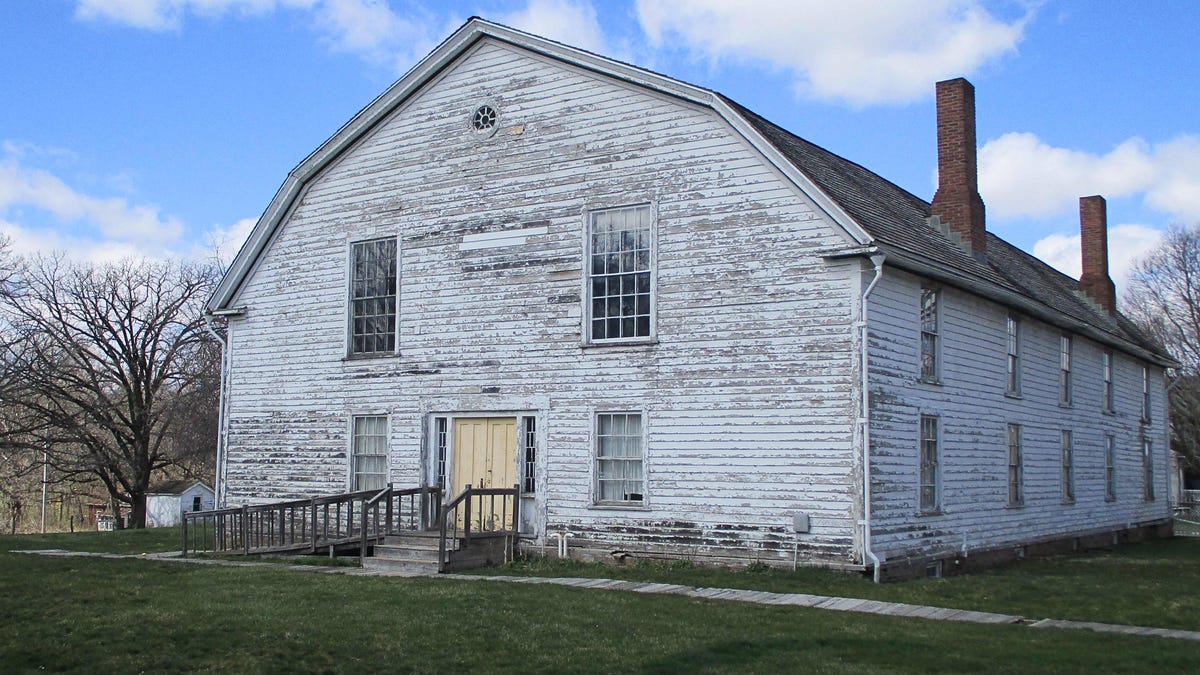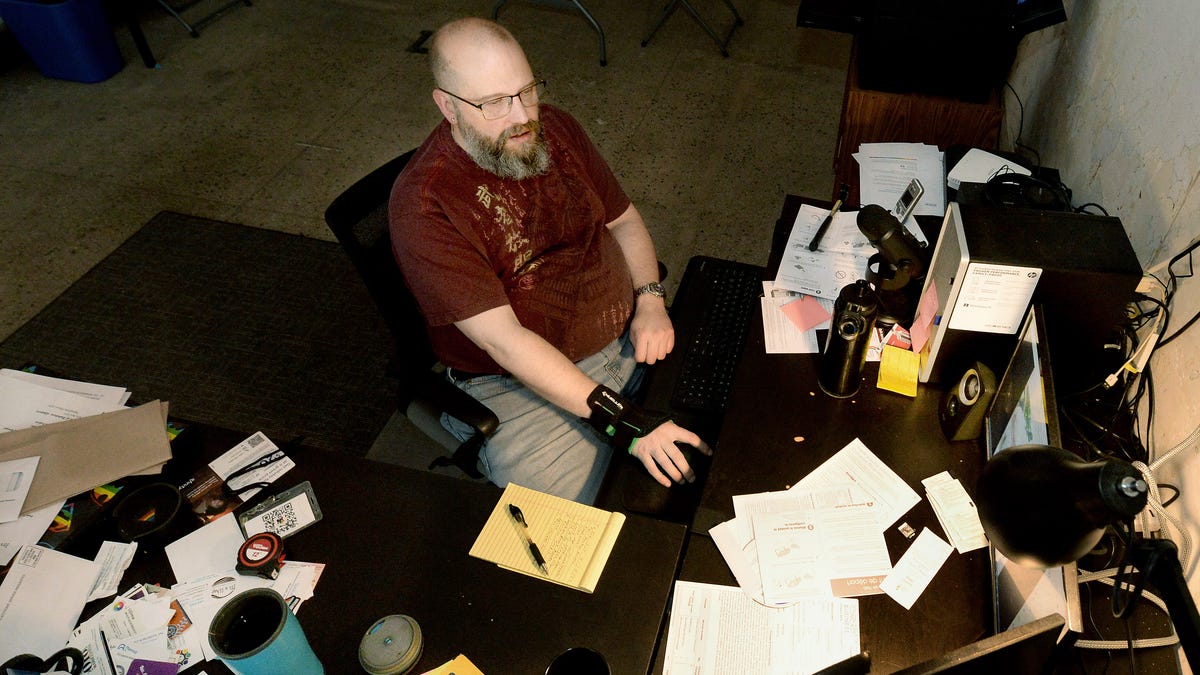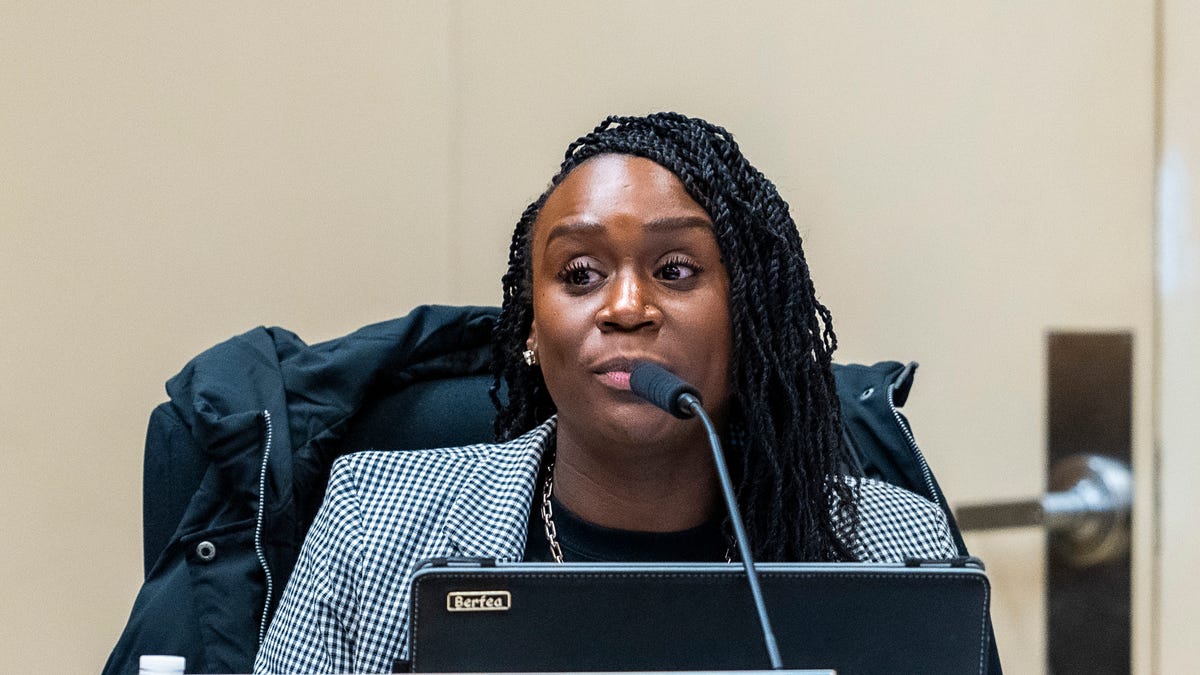Illinois
Booze, beads and art among unclaimed gifts lavished upon billionaire Illinois Gov. J.B. Pritzker

SPRINGFIELD, Ill. (AP) — Illinois Gov. J.B. Pritzker has so many fans and friends that he receives a $30 gift at the rate of one every three days, but because of his job he accepts none of them, and rarely even sees them.
The second-term Democratic governor and multi-billionaire has been lavished with hundreds of gifts from around the world, ranging from a $950 bottle of Japanese whiskey to 35 cents: a quarter and dime, to be exact.
The state’s 25-year-old Gift Ban Act prohibits public employees such as Pritzker from accepting presents, with broad exceptions. Therefore, the high-priced hooch delivered compliments of the Japanese embassy and three bottles of tequila valued at $450 have remained untapped.
“I don’t get to do that,” Pritzker said at a stop in Springfield. “I will say I like tequila, so that’s why people will have given that to me, but there are a few other spirits that I like as well.”
Advertisement
Article continues below this ad
Pricey bottles of alcohol are not the only gifts that Pritzker eschews. Most are stored in Springfield and Chicago, with a staff member responsible for thank-you notes. Together, they comprise 4 1/2 years of gratuities totaling 561 gifts valued at $16,890.14, according to a log provided to The Associated Press in response to a public records request.
Perishable food is shared with office staff and visitors. The rest will eventually end up in an appropriate charitable home, gubernatorial spokesperson Jordan Abudayyeh said.
A governor receives gifts for reasons you’d expect: A gift bag when he visits a town or cuts a ribbon, a plaque from an advocacy group when he champions its cause. Promotion also plays a part. Louisiana Gov. John Bel Edwards has sent king cake and beads to gin up interest in Mardi Gras, while authors seem to believe getting a copy of their latest work into Pritzker’s hands will land it on the bestseller list.
With a net worth of $3.5 billion as a Hyatt Hotel heir, Pritzker is not pining for much. But for those government employees who aren’t among the nation’s 326 richest people, according to Forbes magazine, the law prohibits accepting gifts from those who do or seek business with the state, who perform state-regulated activities and lobbyists.
Advertisement
Article continues below this ad
Acceptable presents from one source must not exceed $100 in a single year and no one may accept food or refreshments valued at more than $75 in a single day.
Initiated in 1998 by the late U.S. Sen. Paul Simon, co-authored by then-first-term state Sen. Barack Obama and signed by Republican Gov. Jim Edgar, the Gift Ban Act was the first major ethics reform in Illinois since post-Watergate campaign-finance disclosure laws.
“It’s worked pretty well,” said David Melton of the advocacy group Reform for Illinois. “As a general rule, they (public employees) are not allowed to accept gifts. That’s the right approach.”
Based on value alone, Pritzker could accept the overwhelming majority of his gubernatorial gift pile. Each present, arriving at a rate of just under 10 a month, averages about $30.
Advertisement
Article continues below this ad
Beside the four bottles of luxurious liquor, there are only six gifts that are generally off limits, including a $200 Mondaine watch from the Swiss ambassador to the U.S. and a $120 potpourri of eco-friendly pet waste bags, biodegradable diaper bags, bamboo utensils and more from a citizen named Tiffany Kuhl.
The COVID-19 crisis imbued the governor’s admirers with generosity. From March 2020 through December 2021, Pritzker received 33 gifts specifically in appreciation of his pandemic protocol, including some that seemed more personal: handmade face-coverings, items with inspirational messages, selections of food and a Gov. Pritzker bobblehead from the National Bobblehead Hall of Fame and Museum in Milwaukee.
There also was “2:30 p.m. Man,” a painting of a smiling Pritzker in acrylic by SeungRi “Victoria” Park, a Chicago schoolteacher and artist.
“Every day at 2:30, he showed up on my TV,” said Park, referring to Pritzker’s daily news conferences during the worst of the pandemic. “I don’t vote for any politicians, but I like him. I wanted to paint him. He reminded me of Buddha.”
Advertisement
Article continues below this ad
Pritzker, the state’s third Jewish governor, was not a spiritual leader to Park, but his message resonated.
“I don’t go with religion and I don’t go with politicians,” said Park, who has remained free of COVID-19 in the 3 1/2 years since the coronavirus crept into Illinois. “But I go with science.”
As for the Governor’s Gifts scorecard? Shirts: 54. Hats: 21. Mugs and totes: 23. Scarves: seven, including three maroon and gold Loyola University wraps. Pens and pencils: 8. Pins: 11 (plus one rolling pin).
There were 188 books, 27 from the authors themselves, including former Israeli prime minister Shimon Peres. He is listed as sending a signed copy of his autobiography, though he died two years before Pritzker’s election. Sidney Blumenthal, a former adviser to President Bill Clinton, sent his latest Abraham Lincoln biography, along with tequila and a stuffed pink flamingo. Consumer advocate Ralph Nader and his co-author, Mark Green, each sent a copy of “Wrecking America,” a critique of Donald Trump’s presidency.
Advertisement
Article continues below this ad
Sometimes gifts come wrapped in the wrong potato chip bag, like when Pritzker stopped at a Freeport elementary school on June 6 and received from the Stephenson County Democratic Party two bags of Mrs. Fishers potato chips made in nearby Rockford, instead of the equally salty Mrs. Mike’s potato chips manufactured in Freeport.
Party chairperson Jody Coss cannot say for certain whether she grabbed the Freeport snack when she decided to add some hometown flavor to the governor’s greeting.
“The intention,” Coss said sheepishly, “was to give him Mrs. Mike’s.”
Advertisement
Article continues below this ad
Associated Press researcher Jennifer Farrar in New York contributed.

Illinois
Illinois hemp businesses owners call for regulation and taxation, not prohibition

The last thing most business owners want is to be taxed and regulated, but hemp business owners are asking for just that — as a way to keep their industry alive.
Hemp entrepreneurs came out Tuesday in favor of a state legislative proposal to license hemp sales, require testing and labeling of their products, prohibit products that look like well-known snack brands, and limit sales to those 21 and over. The bill would create 10% wholesale and a 10% retail sales taxes, and an unlimited number of $500 licenses.
That proposal stands in contrast with a bill backed by the Cannabis Business Association of Illinois, which would prohibit sales of hemp-derived intoxicating products.
Jennifer Weiss, founder and CEO of Cubbington’s Cabinet in Chicago, which sells hemp products, fears that the opposing bill would set such strict limits that it would even prevent sales of non-intoxicating products such as CBD.
“We would have to shut our doors, as well as hundreds of other Illinois companies,” she said. “Let’s not go backward with out-of-touch prohibitions.”
Potentially at stake is the future direction of the cannabis industry in Illinois. Currently, a split between state and federal law has created a stark contrast between the marijuana and hemp industries.
Both marijuana and hemp are grown from the same cannabis plant. State law has legalized marijuana, which gets users high through a component called delta-9-THC. Marijuana remains illegal federally. In 2018, Congress legalized hemp, which is defined as cannabis having less than .3% delta-9-THC, and so was meant to allow sales of non-intoxicating products like CBD.
But hemp processors figured out how to synthetically derive other intoxicating cannabinoids from the plant, such as delta-8 or delta-10, or even delta-9-THC. The CDC issued a health advisory in 2021 warning of adverse events involving consumption and insufficient labelling of delta-8, similar to delta-9 intoxication.
State weed licenses remain very limited and expensive, and are subject to strict testing and labeling requirements, meant to ensure their purity and potency. In contrast, unlicensed hemp is being sold in vape shops, corner stores and gas stations across the country, with no age or other restrictions.
As a result, sales of hemp products have exploded into a $28 billion industry, even larger than the legal cannabis market, by one estimate. The recent move by federal regulators to relax restrictions on cannabis would not likely affect the hemp THC conundrum. As a result, some licensed cannabis businesses have even resorted to selling hemp-based products.
Last month, some lawmakers and the Cannabis Business Association of Illinois, which represents the licensed cannabis industry, called for a ban on intoxicating hemp products until an advisory committee can recommend how to proceed.
Tiffany Chappell Ingram, the association’s executive director, issued a statement again calling for a “pause” of hemp intoxicant sales pending further studies.
“We look forward to working with legislators to find a path forward that empowers consumers, protects minors and ensures the state’s adult-use cannabis law lives up to its full promise, including uplifting social equity license holders and communities disproportionately impacted by the war on drugs,” she said.
State Rep. La Shawn Ford, a Chicago Democrat and chief sponsor of the bill to regulate hemp, said lawmakers shouldn’t kill a multi-billion dollar industry, and create an illegal market.
“Prohibition doesn’t work, and Illinois should reject going backward,” he said.
John Murray, CEO of Sustainable Innovations in Rockford, said his company is using its larger hemp business to help finance its licensed cannabis venture.
While licensed dispensary owners could be undercut by hemp businesses, they could operate in both spheres, he said.
“We believe we can do both, and we are doing both,” he said.
Illinois
2024 list of Most Endangered Historic Places in Illinois released. Here’s what’s on it.

Landmarks Illinois has placed the Bishop Hill Colony Church along with nine other sites across the state on its 2024 list of Most Endangered Historic Places in Illinois.
The sites, announced during a Tuesday news conference, include historic homes, banks, places of worship, factories, theaters, office buildings, schools, courthouses and cultural centers.
“This year’s ‘Most Endangered’ sites are not only incredibly important places in their communities, but many are large-scale buildings that sit prominently in highly visible areas near city centers, in historic districts or on state-owned land. Their neglect is seen and felt,” Bonnie McDonald, president and CEO of Landmarks Illinois, said in a news release.
“Despite their current condition, these places tell important stories from our past — stories that should not be erased due to insufficient investment or general disregard for our collective histories.”
This year’s Most Endangered Historic Places are in Chicago, Blue Island, Bishop Hill, Golconda, Old Shawneetown, Collinsville, Decatur, East St. Louis and Vienna.
Landmarks Illinois’ annual list is meant to call attention culturally and architecturally significant places in Illinois that are in desperate need of preservation resources.
Bishop Hill Colony Church
Bishop Hill, Henry County: The Village of Bishop Hill is one of the earliest settlements of Swedish immigrants in the United States, established as a utopian religious community by Eric Janson and his followers in 1846 during the first wave of mass Swedish immigration. Many of the village’s original buildings have survived, including Colony Church (1848), Ox Boys’ Dormitory (1850) and Bjorklund Hotel (late 1850s). The area of the original settlement is a National Historic Landmark and is also designated as a State Historic site, administered by the Illinois Department of Natural Resources.
According to Landmarks Illinois, previous Illinois leaders have not allocated sufficient funds to address upkeep at the site, which has resulted in the need for several repairs. Colony Church has the greatest need. The church is need of a new roof, siding replacement, paint stripping and new paint, foundation work, replacement of rotting wood, new gutters and plaster repair.
Illinois State Sen. Neil Anderson, R-Andalusia, and State Rep. Travis Weaver, R-Edwards, have urged state lawmakers and Gov. JB Pritzker to set aside funds for critical repairs, and, with Tuesday’s announcement, Landmarks Illinois also is urging the state to provide the Department of Natural Resources with the money and resources to make the repairs and properly manage sites like Bishop Hill.
Buel House State Historic Site
Golconda, Pope County: The Alexander Buel House, constructed in 1840, is a state historic site with ties to the Trail of Tears. Like other Illinois State Historic Sites included on our 2024 Endangered List, the house suffers from deferred maintenance due to a lack of state resources. The state recently painted the exterior of the house, but other repairs are desperately needed, including urgent interior work.
Shawneetown Bank State Historic Site
Old Shawneetown, Gallatin County: Shawneetown Bank State Historic Site is home to the former Bank of Illinois, the oldest bank building in the state. Landmarks Illinois previously listed the landmark structure on the 2009 Most Endangered list due to insufficient maintenance. Today, it has fallen into further disrepair. As is the case with other Illinois State Historic Sites included on the 2024 Most Endangered list, budgetary concerns place this property in danger of continued neglect.
Libby, McNeill and Libby Building
Blue Island, Cook County: The former canning and bottling factory was built in 1918 for the Libby, McNeill and Libby company, the second-largest producer of canned foods in the country at the time. For decades, the factory was an economic engine for the community, employing hundreds of local residents and migrant workers, until it closed in 1968. The building is currently vacant and is beginning to decay due to a lack of reuse and proper maintenance.
Portage Theater
Chicago, Cook County: The prominent theater, completed in 1920 near Portage Park’s popular “Six Corners” area, has been an important cultural institution for the local community. However, it has suffered from deferred maintenance since fully closing in 2018. While the current owner has demonstrated interest in revitalizing the designated Chicago Landmark, long-term plans remain unclear and securing financing has been a challenge.
Sears Administration Building
Chicago, Cook County: Constructed in two phases in 1905 and 1914, the Administration Building served as office headquarters for the former retail giant, Sears, Roebuck and Co., until the 1970s. It is part of the company’s sprawling campus in the city’s North Lawndale neighborhood, a complex that is a designated National Historic Landmark and is a Chicago landmark district. The building has been on the market since the spring of 2023. And, unlike other buildings on the Sears campus that have been rehabilitated and adaptively reused, this one sits vacant and underutilized despite its potential.
Former Collinsville Township High School
Collinsville, Madison County: The former Collinsville Township High School welcomed generations of students between 1908 and 1982 and has had various uses since, but today sits empty and deteriorating in a prominent part of the Southern Illinois city. The current owner has plans to develop the building into affordable housing and has identified funding and tax incentives to do so. Local officials, however, oppose the project, which means that the school may continue to sit vacant indefinitely.
Decatur Masonic Temple
Decatur, Macon County: The Decatur Masonic Temple has served as an important community center in Decatur’s historic district since it was built in 1929. Throughout the past nearly 100 years, it has hosted cultural events and famous speakers like Eleanor Roosevelt and John F. Kennedy Jr. The building has suffered deterioration and does not generate enough income today to pay for proper maintenance, leading to expensive damages.
Former Lincoln School
East St. Louis, St. Clair County: Built in 1886 as a school for Black students, the historically significant building has survived the 1917 East St. Louis Race Riots and the widespread demolition seen in the Southern Illinois city during the mid-20th century. Despite its local importance and proximity to the city’s historic district, without a new use and proper investment, the school faces demolition.
Johnson County Courthouse
Vienna, Johnson County: Built in 1871, the Johnson County Courthouse was the oldest continually operating courthouse in Illinois before it closed in 2023. While a new county complex is being constructed to house county offices, the nationally landmarked courthouse was supposed to be repurposed for local businesses and other governmental work. However, it has sat vacant since September 2023 when a roof truss fractured. Until funding for permanent stabilization is secured, the future of the building remains uncertain.
The annual Most Endangered Historic Places in Illinois list is Landmarks Illinois’ largest and longest-running advocacy program. Launched in 1995, the annual list aims to boost advocacy efforts and build support for each property’s eventual preservation.
Illinois
LGBTQA+ nonprofit newspaper opens brick-and-mortar location in Springfield

The Illinois Eagle, a LGBTQA+ nonprofit online newspaper, has opened its first brick-and-mortar location in Springfield.
Editor and publisher of the Illinois Eagle Tom Wray said it was time to expand the news organization to its own solid location and stop cluttering his living space with the news.
“Literally it was the past few years in the backroom of my house,” Wray said. “Either the house I rented, or the house I own now. It’s getting to the point I simply don’t have the room in my house anymore. I also needed the separation of working from my home; I already have ADD (Attention Deficit Disorder) and have to work at concentrating.”The new location for the online newspaper is the historic 1133 W. Governor St. which was previously the House + Garden reSource gallery home decor until owner Greg Pierceall relocated to 1220 W. Governor St. last year.
The building was originally built to be Springfield’s west-side Community Bakery over 100 years ago and now houses Stella Coffee and Tea to the left of the newspaper and Junk in the Trunk vintage to its right.
More: Could a result in an Alabama election impact Illinois? One abortion-rights group says yes
Wray is sub-leasing the building from Stella Coffee and Tea next door and still has lots of work to do but overall, the step forward for the paper is a major one.
“We haven’t had a grand opening or anything like that yet – a few friends have come in and said ‘ooh I love this look’ (in regards to the walls),” Wray said. “It’s literally patchy spackle and bare walls. They say it’s got a nice kind of vibe but I don’t want that vibe.”
Wray, 49, has over 31 years of journalism experience in Indiana and Illinois; he went to Franklin college Indiana, graduating with a bachelors of journalism and theater in 1995.
After graduating from college, Wray worked at a newspaper in Kokomo where the Ryan White case took place. White was a 13-year-old boy who was diagnosed with AIDS after a blood transfusion in 1984 and faced AIDS-related discrimination from his community. Congress passed the Ryan White Comprehensive AIDS Resources Emergency (CARE) Act in August 1990 after his death.
“When you’re a gay man in Indiana in the ‘90s and working in Kokomo … I had to actually interview the radio host who was one of the people who was (vocal against White) the most,” Wray said. “Some of the staff knew I was gay, I never told the editor – he found out. Then started to be a pattern of being … pushed out. I went from having a section to having a page and a half.”
According to Wray, it got to a point where he took the first job he could and moved to Chicago and fell in love with Illinois. After 23 years in the windy city where he started the Illinois Eagle, Wray needed a change of pace and decided to move to Springfield during the pandemic, as an accepting city he could fall in love with all over again.
To fund the newsrooms, Wray is applying for national grants like Press Forward, which strengthens communities by reinvigorating locally owned news outlets through donors.
A grand opening is scheduled to take place during Springfield’s PrideFest later this month.
Claire Grant writes about business, growth and development and other news topics for the State Journal-Register. She can be reached at CLGrant@gannett.com; and on X (Formerly known as Twitter): @Claire_Granted
-

 World1 week ago
World1 week agoRussian forces gained partial control of Donetsk's Ocheretyne town
-
Movie Reviews1 week ago
Challengers Movie Review
-

 Politics1 week ago
Politics1 week agoDems disagree on whether party has antisemitism problem
-

 Politics1 week ago
Politics1 week agoWashington chooses its wars; Ukraine and Israel have made the cut despite opposition on right and left
-

 Politics1 week ago
Politics1 week agoHouse Republicans brace for spring legislative sprint with one less GOP vote
-

 World1 week ago
World1 week agoAt least four dead in US after dozens of tornadoes rip through Oklahoma
-

 Politics1 week ago
Politics1 week agoAnti-Trump DA's no-show at debate leaves challenger facing off against empty podium
-

 Politics1 week ago
Politics1 week agoStefanik hits special counsel Jack Smith with ethics complaint, accuses him of election meddling


















